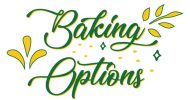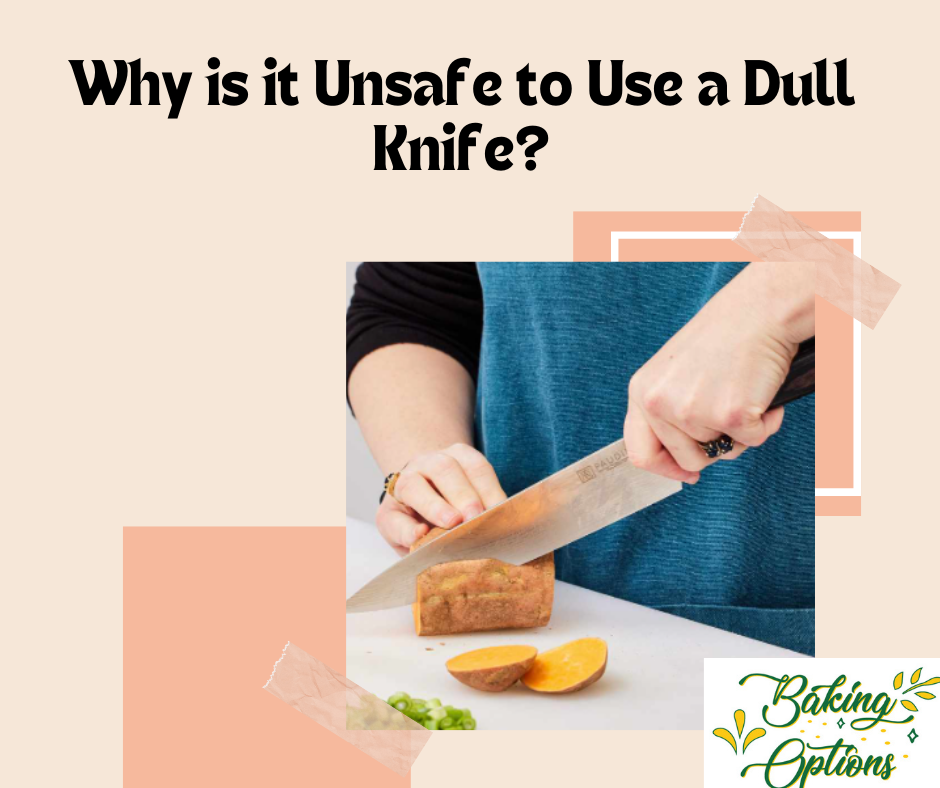We’ve always heard that a sharp knife is more dangerous than a dull knife, but let me tell you that this is not the case. But do you know why is it unsafe to use a dull knife?
Friends, we’ve always been told that using a dull knife is safer while using a sharp knife is not. However, nobody has explained the logic behind it.
Using a dull knife is unsafe because it requires more force, and the more force we apply, the higher the chances are that the knife will slip. And since we apply more force, it can also lead to deeper cuts on our hands. Well, this is just a small fact. But I will explain in more detail why it is unsafe.
Contents
Knives: Sharp vs. Dull
Why Sharp Knives Cut Better?
I always prefer smart work in cooking and baking because it’s fast and perfect. Let me clarify this with my example of why a sharp knife is essential. I had a dull knife that I used to cut bread slices, and they were so uneven that it ruined the entire appearance of my recipe. After putting in so much effort, what’s the point if something isn’t perfect and safe?
Why Does Force Matters?
Many people are unaware that using blunt knives is even more hazardous than using sharp ones. Here’s why: the same case applies here when a knife is sharp; one will only have little pressure to make it slice through whatever it is cutting.
However, when the blade is blunt, one must apply much pressure to make that cut. Applying more force only increases the likelihood of the knife slipping and causing you an injury.
Better Control Makes Cutting Safer
When cooking, especially with the items you are cutting, it’s very important to have proper control over the knife. As I mentioned earlier, if the knife is dull, you’ll need to exert more force, and your full focus will be just on getting the cut done, but you won’t be able to focus on neatness, which means the cutting won’t be perfect at all. I have personally experienced this myself.
What People Get Wrong
People are saying it’s wrong because they have misunderstood, but the truth is that all the facts I have shared with you indicate that a dull knife is unsafe, increases the workload, and does not allow for neatness. However, no available fact supports the statement that “a sharp knife is dangerous.”
What Are The Signs Of A Sharp Knife?
I use a straightforward method called the tomato rule to determine whether my knife is sharp. If I can cut a tomato and the knife glides through it without causing it to become squashed, then the blade is sharp enough. It depends on your experience, and you might develop the strategy that you consider the best.
Sharpening the knife is one of the most crucial things you must do. Once you realize your blade is blunt, it is relatively straightforward. However, the issue is that most people fail to remember to inspect their knives frequently.
During cooking, they often know that a sharp knife is more effective. When they use the sharper blade, they never feel like returning to the dull blade again.
Some Common Cutting Mistakes & Injuries
Injury Types with Knives
- Simple Cuts: Blunt knives cut the flesh unevenly, leading to increased wound healing time compared to when the cut occurs with a knife.
- Deep Cuts: When you try to cut something using a blunt-edged knife, the likelihood is that you may apply more pressure and end up slicing yourself deeply.
- Stab Wounds: If you maintain an improper grip or grip a knife wrong, you may end up slicing yourself, and this is even worse with dull knives as they require more force.
Things Not to Do
- Using Bad Knives
Blunt knives present a greater risk than sharp knives because you apply a lot of force, which increases the chances of slipping. Maintain your knives well, or purchase quality ones that hold their edge well.
- Cutting on Bad Surfaces
Do not chop on plates or slippery plastic – the blade can slide off them. Slices bread using a cutting board that doesn’t move around.
- Holding the Knife Wrong
It will only take a wrong grip to slip and find that you can no longer control the knife. Grasp it tightly and use the back side of the knuckles for the slicing movement.
- Going Too Fast
Sweeping or chopping anything too fast can lead to mishaps. Be very cautious and patient to ensure you maintain control at all points.
What To Do In Case Of A Cut?
- It is very important to wash your hands thoroughly before treating an injury; this is the first and main step. However, you should not make the mistake of using soap; otherwise, it may lead to an infection.
- You must apply pressure on the wound area with cloth or bandages to stop the bleeding.
- If the injury is on the part of the body, such as the hand, foot, or leg, then the injured part should be placed a little higher than the heart level to minimize swelling and bleeding.
- When the bleeding has ceased, wash the wound gently with soap and water. Do not apply hydrogen peroxide or alcohol to the wound because it will extend the time it takes to heal.
- Clean the wound with water, put on an antibiotic ointment, & then cover the wound with a bandage.
- If you have made a deep cut, the wound does not cease to bleed, or the signs of infection appear, seek professional help.
Sharp Knife Cuts Heal More Quickly
The kitchen is a contradictory place for a cut—both the riskiest and the most convenient. Uncooked food can contain harmful bacteria, posing a real risk of infection.
Yet, it’s also the best place to get a cut, as soap, water, and first-aid essentials are always within arm’s reach to ensure swift and effective care. Cuts from sharp knives heal faster.
It refers to the observation that clean and precise cuts, such as those made by a sharp knife, tend to recover more quickly and with fewer difficulties than cuts from dull or irregular objects. When a sharp blade cuts, it does so precisely, causing minimal damage to the surrounding tissue.
Clean edges of the wound make it easier to close during healing. This helps the body’s natural repair process work more effectively.
The Danger of Poor Cutting Tools
Those tools that do not perform as expected are termed ineffective cutting tools. These may occur due to dullness, damage, bad design, or misuse. Achieving the desired outcome requires more effort, leading to safety and operational issues.
Increased Physical Strain
One of the most significant risks of using ineffective cutting tools is that, through excessive physical effort, they are increasing stress on the user. When a tool is not sharp or maintained correctly, more force is applied to complete the task. This increased effort can result in several things:
- Muscle Fatigue: Using excessive force continuously can lead to muscle fatigue, overall efficiency, and precision.
- Repetitive Strain Injuries: Cumulative strain over time can lead to repetitive strain injuries, including tendonitis or carpal tunnel syndrome.
The greater the force, the higher the chances that the tool slips and causes injury.
Final Words about Why is it Unsafe to Use a Dull Knife
I would never recommend using a dull knife or instrument. If you are approaching cooking as a skill and learning, having proper and perfect tools like knives and other necessary kitchen gadgets is very important.
If you have an old knife that has become dull, there are many methods to sharpen it, but as I mentioned in the article “Why is it Unsafe to Use a Dull Knife,” I don’t think anyone who has read that article will decide to use a dull knife. In the end, I will say safety first.

